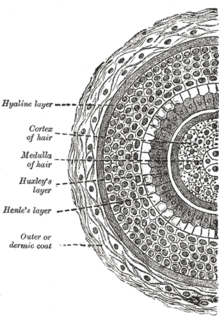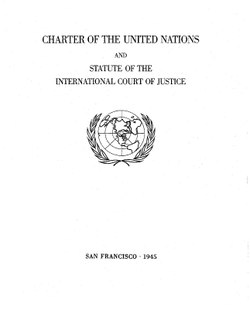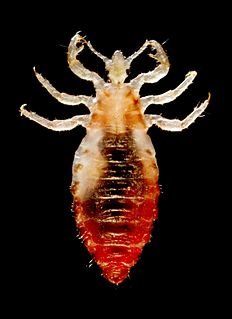
Fat is one of the three main macronutrients, along with the other two: carbohydrate and protein. Fats molecules consist of primarily carbon and hydrogen atoms, thus they are all hydrocarbon molecules. Examples include cholesterol, phospholipids and triglycerides.

Human rights are "the basic rights and freedoms to which all humans are entitled" Examples of rights and freedoms which are often thought of as human rights include civil and political rights, such as the right to life, liberty, and property, freedom of expression, pursuit of happiness and equality before the law; and social, cultural and economic rights, including the right to participate in science and culture, the right to work, and the right to education.
All human beings are born free and equal in dignity and rights. They are endowed with reason and conscience and should act towards one another in a spirit of brotherhood.

Hair is a protein filament that grows from follicles found in the dermis. Hair is one of the defining characteristics of mammals.
The human body, apart from areas of glabrous skin, is covered in follicles which produce thick terminal and fine vellus hair. Most common interest in hair is focused on hair growth, hair types, and hair care, but hair is also an important biomaterial primarily composed of protein, notably alpha-keratin.

The Office of the United Nations High Commissioner for Human Rights is a department of the Secretariat of the United Nations that works to promote and protect the human rights that are guaranteed under international law and stipulated in the Universal Declaration of Human Rights of 1948. The office was established by the UN General Assembly on 20 December 1993 in the wake of the 1993 World Conference on Human Rights.

The soul, in many religious, philosophical, and mythological traditions, is the incorporeal essence of a living being. Soul or psyche are the mental abilities of a living being: reason, character, feeling, consciousness, memory, perception, thinking, etc. Depending on the philosophical system, a soul can either be mortal or immortal. In Judeo-Christianity, only human beings have immortal souls. For example, the Catholic theologian Thomas Aquinas attributed "soul" (anima) to all organisms but argued that only human souls are immortal.

An artery is a blood vessel that takes blood away from the heart to all parts of the body. Most arteries carry oxygenated blood; the two exceptions are the pulmonary and the umbilical arteries, which carry deoxygenated blood to the organs that oxygenate it. The effective arterial blood volume is that extracellular fluid which fills the arterial system.
The United Nations Commission on Human Rights (UNCHR) was a functional commission within the overall framework of the United Nations from 1946 until it was replaced by the United Nations Human Rights Council in 2006. It was a subsidiary body of the UN Economic and Social Council (ECOSOC), and was also assisted in its work by the Office of the United Nations High Commissioner for Human Rights (UNOHCHR). It was the UN's principal mechanism and international forum concerned with the promotion and protection of human rights.
The human body is the structure of a human being. It is composed of many different types of cells that together create tissues and subsequently organ systems. They ensure homeostasis and the viability of the human body.

The Charter of the United Nations of 1945 is the foundational treaty of the United Nations, an intergovernmental organization. The UN Charter articulated a commitment to uphold human rights of citizens and outlined a broad set of principles relating to achieving ‘higher standards of living’, addressing ‘economic, social, health, and related problems,’ and ‘universal respect for, and observance of, human rights and fundamental freedoms for all without distinction as to race, sex, language, or religion.’ As a charter, it is a constituent treaty, and all members are bound by its articles. Furthermore, Article 103 of the Charter states that obligations to the United Nations prevail over all other treaty obligations.

In biology, tissue is a cellular organizational level between cells and a complete organ. A tissue is an ensemble of similar cells and their extracellular matrix from the same origin that together carry out a specific function. Organs are then formed by the functional grouping together of multiple tissues.

Standard anatomical terms of location deal unambiguously with the anatomy of animals, including humans.

Human physical appearance is the outward phenotype or look of human beings.

The Western European and Others Group (WEOG) is one of five unofficial Regional Groups in the United Nations that act as voting blocs and negotiation forums. Regional voting blocs were formed in 1961 to encourage voting to various UN bodies from regional groups. As of 2010, there are 28 member states, plus one observer. Almost all members are in Western Europe, but the WEOG is unusual in that geography is not the sole defining factor; Europe is divided between the WEOG and the Eastern European Group, and the WEOG also contains Canada, Australia, New Zealand, which are culturally and politically descended from Western European states but are located far away from them. Israel is also a permanent member, due to its strong cultural and historical links with Western Europe and its inability to join the Asian Group due to opposition by Arab countries. The group also contains one observer, the United States, which has voluntarily chosen not to participate as a member, and attends meetings as an observer only. However, it is considered to be a member for putting forward candidates for electoral purposes in the United Nations General Assembly. Turkey participates fully in both the WEOG and the Asian Group, but for electoral purposes is considered a member of the WEOG only.
The Working Group on Indigenous Populations (WGIP) was a subsidiary body within the structure of the United Nations. It was established in 1982, and was one of the six working groups overseen by the Sub-Commission on the Promotion and Protection of Human Rights, the main subsidiary body of the United Nations Commission on Human Rights.

The body louse is a louse that infests humans. The condition of being infested with head lice, body lice, or pubic lice is known as pediculosis. Body lice are vectors for the transmission of the human diseases epidemic typhus, trench fever, and relapsing fever. The body louse genome sequence analysis was published in 2010.
A cadaver is a dead human body that is used by medical students, physicians and other scientists to study anatomy, identify disease sites, determine causes of death, and provide tissue to repair a defect in a living human being. Students in medical school study and dissect cadavers as a part of their education. Others who study cadavers include archaeologists and artists.
Geographical features are naturally-created features of the Earth. Natural geographical features consist of landforms and ecosystems. For example, terrain types, are natural geographical features. Conversely, human settlements or other engineered forms are considered types of artificial geographical features.

In philosophy, the matter of personal identity deals with such questions as, "What makes it true that a person at one time is the same thing as a person at another time?" or "What kinds of things are we persons?" Generally, personal identity is the unique numerical identity of a person in the course of time. That is, the necessary and sufficient conditions under which a person at one time and a person at another time can be said to be the same person, persisting through time.















